It Must Be!
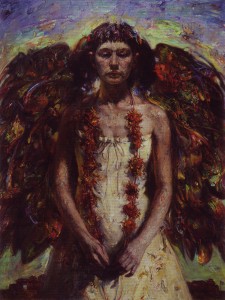 Last night I attended a wonderful, Chamber Music performance-with-discussion in which our very own, world-class Arianna Quartet played one of the final pieces of music that Beethoven wrote, Opus 135. It was the second of these events I’ve attended and they were both great. (And inexpensive!) They’re part of the First Mondays concert series at UMSL Grand Center. The next one is in March. I will definitely be there…maybe I’ll see you!
Last night I attended a wonderful, Chamber Music performance-with-discussion in which our very own, world-class Arianna Quartet played one of the final pieces of music that Beethoven wrote, Opus 135. It was the second of these events I’ve attended and they were both great. (And inexpensive!) They’re part of the First Mondays concert series at UMSL Grand Center. The next one is in March. I will definitely be there…maybe I’ll see you!
Anyway, I went with a dharma buddy, Thomas, and on the drive home we got to talking about how so much of the evening’s discussion — about Beethoven’s amazing music, his painful struggles with poor health, his impending death, and especially the notations he made in this score: “Must it be?” (at a very dark, somber passage) and then “It must be!” (at a very bright and life-affirming passage) — how all of this is reminiscent of the Buddha’s teachings about suffering and the end of suffering, which is that release comes as a result of accepting, without aversion, that which can not be other than it is.
And then Thomas remembered a commentary on these late quartets, which quoted Nietzsche: “Whoever has built a new Heaven has found the strength of it only is his own Hell.”
Which seems like a beautiful, even transcendent, but not exactly “happy” way of saying the same thing. Just like Beethoven’s last quartet.
***
(image: The Wings by Victor Wang, oil on canvas, 2012)
On Not Getting Lost
 For today, I offer this poem by Lao-Tzu (with a few adjustment by me):
For today, I offer this poem by Lao-Tzu (with a few adjustment by me):
A wise traveler has no fixed plans
and is not intent upon arriving.
A wise artist lets her intuition
lead her wherever it wants.
A wise scientist has freed herself of concepts
and keeps her mind open to what is.
Thus the Master is available to all people
and doesn’t reject anyone.
She is ready to use all situations
and doesn’t waste anything.
This is called embodying the light.
What is a wise person but a foolish person’s
teacher?
What is a foolish person but a wise person’s lesson?
If you don’t understand this, you will get lost,
however intelligent you are.
It is the great secret.
***
(photo by Nichole Robertson)
Walking and Breathing
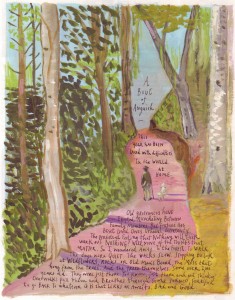 The latest issue of Mindful magazine just arrived, which is a treat for many reason, not the least of which is the drawing by Maira Kalman always featured on the last page under the heading: Mindspace.
The latest issue of Mindful magazine just arrived, which is a treat for many reason, not the least of which is the drawing by Maira Kalman always featured on the last page under the heading: Mindspace.
Here’s this month’s installment. (click on the image to enlarge) It reads:
A Bout of Anguish —
This year has been laced with difficulties. In the world. At home.
Old grievances have erupted, ricocheting between family members. Bad fortune has beset loved ones. Upheaval. Uncertainty. The persistent feeling that nothing will ever work out.
Nothing? Well, none of the things that matter.
So I wandered away. To the forest. To walk. The days were quiet. The walks slow.
Stopping to look at wildflowers, rocks or Old Man’s Beard, the moss that hung from the trees. And the trees themselves. Some over 1,000 years old. They were just there. You know, just there and not thinking.
One walks past them and breathes through some sadness, fortified to go back to whatever it is that lurks or awaits, bad and good.
Meditation as Relationship
 I really like what Akincano Marc Weber says about meditation — that it is about establishing a relationship with your mind.
I really like what Akincano Marc Weber says about meditation — that it is about establishing a relationship with your mind.
“…It is meeting your mind, engaging your mind, inquiring into the dimensions of your mind, finding out what your mind needs….
“It’s what you do in relationship. You don’t just go in, shake hands, and let rip with your project or with your plan. You establish a relationship. You say Hello, How are you, Where have you come from, Have you slept well, Where are you staying…. You establish a relationship…..
“Your mind has a life of its own. I think you will agree with me on this after some meditation. What is happening in your mind will need your skillful response, your attuned response. You can’t just go in there and give orders.
“You can’t just go in there and follow along, either. We’re not doting on all our whims and fancies. But as meditators, we do want to know what the mind has as this life of its own. We do want to know its images. We do want to know its desires. We do want to know what makes it calm, what makes it anxious, what makes it scattered, or collected. You do want to know all these things. And to find this out requires a skill. And that skill is a relational one.
“It has something to do with curiosity. And it has something to do with kindness. It has something to do with patience. And a tolerance for your mind to be different from what you expect it to be, from what you think it should be. A tolerance for what is baffling, surprising, bewildering to you…..
“You will need the skill to meet what is presently arisen. Take what you find from where it is and turn it into a wholesome direction, cultivate from there, refine from there. Some things will need to be strengthened. Some things will need to overcome. That is a relational skill.”
(For a link to the entire talk, click here.)
Memento Mori
 Yesterday I walked out of my house and was just about to step off the curb onto the street, when I realized that right where my foot was about to land, there was a squirrel, clearly dead, but intact, lying “peacefully” on its side, among the fallen leaves. I managed to check myself in time to avoid stepping on it (while at the same time crying out, involuntarily, in a weird-sounding, almost cartoon-ishly high-pitched voice, something like: “EEEEEK!!!”)
Yesterday I walked out of my house and was just about to step off the curb onto the street, when I realized that right where my foot was about to land, there was a squirrel, clearly dead, but intact, lying “peacefully” on its side, among the fallen leaves. I managed to check myself in time to avoid stepping on it (while at the same time crying out, involuntarily, in a weird-sounding, almost cartoon-ishly high-pitched voice, something like: “EEEEEK!!!”)
But then I just stood there. I thought for a minute about trying to bury it….out of a sense of propriety, to a certain extent…but also because it had fallen right where I normally park my car and I didn’t want to run over it and make a bloody mess. But I didn’t have a shovel and I didn’t know where I would be able to dig a hole even if I had one, and I couldn’t really imagine myself asking one of my neighbors to do it for me, so I just stood there.
And I looked at it. I saw that there were a few flies buzzing around, some crawling on the nose and the eye, and then I remembered the practice we did as part of the Dedicated Practitioner Program at Spirit Rock, where we contemplated a Corpse in Decay. The instructions (from the Satipatthana sutta) were to look at a corpse in various stages of decay (we used photographs), and at each stage, to consider own bodies, and to remember:
“This body too is of the same nature; it will be like that; it is not exempt from that fate.”
So I thought about that again, while I looked at the squirrel. It was sobering. But not especially upsetting or disturbing.
Because it’s just the truth.
A Gift from my Teacher
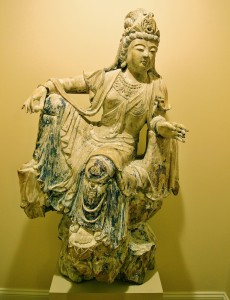 I was delighted to read in this month’s newsletter from IMS (Insight Meditation Society) that my teacher, Lila Wheeler, and her late father, Charles Wheeler, have donated this gorgeous, 100-year-old Kwan Yin statue to the retreat center. The statue, which is from China, had been in Lila’s father’s home for many years. (click image to enlarge)
I was delighted to read in this month’s newsletter from IMS (Insight Meditation Society) that my teacher, Lila Wheeler, and her late father, Charles Wheeler, have donated this gorgeous, 100-year-old Kwan Yin statue to the retreat center. The statue, which is from China, had been in Lila’s father’s home for many years. (click image to enlarge)
Kwan Yin is the figure that represents the embodiment of compassion and is often referred to as “she who hears the cries of the world.”
Lila says: “This Kwan Yin is discreet and never overwhelms you, yet her luminous presences is strong and deepens with contemplative observation. Her face is soft, ageless. The colors and folds of her robe remind us of naturally flowing water — she is both wild and highly civilized.
“Her body is dynamic yet at rest as she turns and flows from one posture to another, like Ananda, whose enlightenment came as he lay down, fatigued from trying too hard.
“Is Kwan Yin standing up from meditation or is she just about to sit down? Perhaps she’s pausing to recall one let thing she wanted to tell us. She seems to be displaying the jewel of her own enlightenment and offering it as a gift — simultaneously.”
***
In July, I’ll be at the Forest Refuge (which is adjacent to IMS), so I’ll get to see her “in person”!
To read more about what’s new at IMS and the Forest Refuge — including lots of photos — click here.
Another Escape
 The Monday night KM Book Group meets tonight and the passage I underlined for discussion is this quote from the Buddha:
The Monday night KM Book Group meets tonight and the passage I underlined for discussion is this quote from the Buddha:
“Being contacted by painful feeling one seeks delight in sensual pleasure. For what reason? Because the uninstructed worldling [meaning: regular a person who hasn’t learned the Buddha’s teachings] does not know of any escape from painful feeling other than sensual pleasure…”
Right. But, of course, it doesn’t work.
It feels good for a moment. But it’s not really satisfying because the pleasure doesn’t last. And it does nothing to address the underlying problem. What’s worse, it just adds it’s own painful consequences.
So what other “escape” is there? Painful feelings (both physical and psychological) are always popping up!
Here’s what the Buddha says: “When feeling a pleasant feeling, one knows, ‘I feel a pleasant feeling.’ When feeling an unpleasant feeling, one knows, ‘I feel an unpleasant feeling.’…”
What that means in practice is to stay with the feeling…recognizing that it’s unpleasant, but not getting carried away with it. For example: I feel really lonely.
The practice is to notice the feeling before it goes all the way into: I’m so alone. Everywhere I look, I see people together. I’ve got nobody. Nobody loves me. I’ll never have sex again. I’m too old. I’m too fat. I’m so depressed. I feel like shit…..
Instead of that, notice the “I feel lonely” voice right when it starts up. Then notice: This feels unpleasant. Then pay attention to whatever comes up next. Probably something like: I don’t like this. Notice how that feels. Is it pleasant or unpleasant? Probably unpleasant. Then just keep noticing what comes up and whether it’s pleasant or unpleasant (or neither).
Pretty soon you’ll notice that when you don’t keep adding fuel to the fire, the feeling dies down. It comes and goes. It’s not permanent. You’re not doomed. You may even have enough peace of mind at that point to see that something can be done to address the situation. Or not. And even that, you can come to be at peace with.
Dharma Kitchen Cornbread
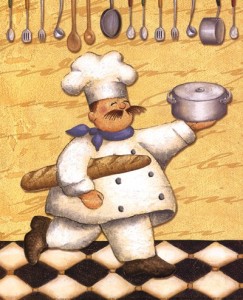 This just in from the IMS (Insight Meditation Society) Kitchen Website. I ate this cornbread last year when I sat the 6-week retreat. They served it with veggie chili and it was GREAT!!!!
This just in from the IMS (Insight Meditation Society) Kitchen Website. I ate this cornbread last year when I sat the 6-week retreat. They served it with veggie chili and it was GREAT!!!!
Maple-Bottomed Rosemary Skillet Cornbread (serves 6)
3/4 cup cornmeal
3/4 cup whole wheat pastry flour
1/2 teaspoon salt
1/4 teaspoon baking soda
1/2 Tablespoon baking powder
1 teaspoon fresh rosemary — crushed or ground
1 Tablespoon sugar
1 egg (beaten)
2 Tablespoons butter — melted
1 cup milk
For the bottom of the pan:
2 Tablespoons maple syrup
2 Tablespoons butter — melted
***
1. Preheat conventional oven to 375 degrees F
2. Mix dry ingredients except for sugar and rosemary and set aside.
3. Warm the milk slightly and then add to it the sugar, rosemary and the first amount of melted butter. Take off burner and when just warm (not hot) add the beaten egg.
4. Put maple syrup and second amount of butter into a large cast iron skillet or Pyrex baking dish and heat gently on burner (if using skillet) or in oven (if using Pyrex) till butter is melted. Then put aside.
5. Add milk mixture to dry ingredients and stir just until smooth. Do not over-mix. Pour the batter into the pan, over the maple syrup and butter.
6. Place pan in oven and bake until done (about 30 minutes). Top should be golden and spring back to the touch. A toothpick inserted in the middle should come out clean.
Enjoy!
Before the Next Thing
 The moon will be dark tonight (a New Moon), which I take as a reminder to notice — and to celebrate — the disappearance of things…..the silence, the darkness, the emptiness that holds the space for the next new thing.
The moon will be dark tonight (a New Moon), which I take as a reminder to notice — and to celebrate — the disappearance of things…..the silence, the darkness, the emptiness that holds the space for the next new thing.
In honor of which I offer this poem:
The Art of Disappearing
by Naomi Shihab Nye
When they say Don’t I know you?
say no.
When they invite you to the party
remember what parties are like
before answering.
Someone telling you in a loud voice
they once wrote a poem.
Greasy sausage balls on a paper plate.
Then reply.
If they say We should get together
say why?
It’s not that you don’t love them anymore.
You’re trying to remember something
too important to forget.
Trees. The monastery bell at twilight.
Tell them you have a new project.
It will never be finished.
When someone recognizes you in a grocery store
nod briefly and become a cabbage.
When someone you haven’t seen in ten years
appears at the door,
don’t start singing him all your new songs.
You will never catch up.
Walk around feeling like a leaf.
Know you could tumble any second.
Then decide what to do with your time.
Thirteen Ways of Looking
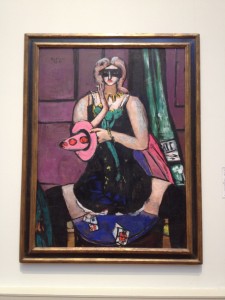 I’ve started, again, to do a different sort of contemplative practice, one that I’ve done a couple of time during the last two years.
I’ve started, again, to do a different sort of contemplative practice, one that I’ve done a couple of time during the last two years.
Here’s the practice: I go to the Art Museum, choose a piece of art (or rather, let a piece of art choose me), then I look at it….closely, carefully, contemplatively…then I write a couple of pages in my journal — whatever comes to mind — beginning with the phrase: “Now I see…”
And then I go back, a week or so later, and I do it again. And then again. And again. And again. Until I’ve done it thirteen times. (Thirteen being chosen with a nod to the enigmatic poem by Wallace Stevens, Thirteen Ways of Looking at a Blackbird.)
It’s amazing how differently I can see the “same” piece of art from one week to the next. Or maybe what’s so amazing is that I can still feel like it’s the same “me” that is seeing the same “it” again and again. When clearly neither of us are the same!
I’ve posted some of my previous experience with this practice here. And here, here, and here. Each of those posts were in response to looking at the well-known Guanyin statue we are SO fortunate to have right here in the St. Louis Art Museum.
But for this round of practice, I’ve chosen a subject that’s a bit more…hmm, what should I say….secular. It’s Max Beckman’s Carnival Mask, Green, Violet, and Pink, painted in 1950 (the year I was born).
I won’t post what I wrote in my journal just yet. Instead, I leave you with the first stanza of the afore-mentioned Wallace Stevens poem:
Among twenty snowy mountains,
The only moving thing
Was the eye of the blackbird.
